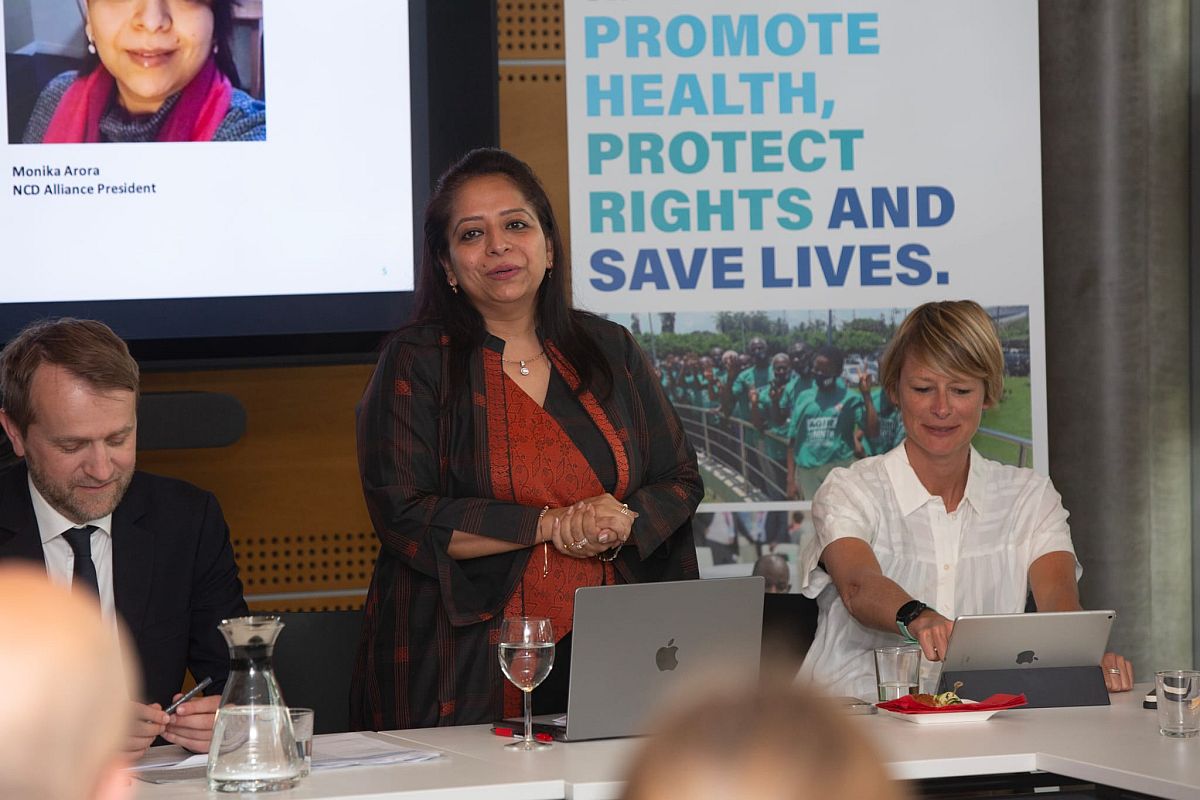GENEVA, Sept 7 – Integrating non-communicable disease (NCD) health services for people living with HIV delivers significant returns on investment and better health outcomes for patients, according to a new report.
The report titled “Spending Wisely: Exploring the Economic and Societal Benefits of Integrating HIV/AIDS and NCDs Service Delivery” was launched today ahead of the Global Week for Action on NCDs by the Geneva-based NCD Alliance and non-profit institute RTI International.
People living with HIV are living longer, thanks to access to antiretroviral therapy (ART), and it is a cruel irony of the success of the HIV response in many parts of the world that people living with the virus are now faced with a higher prevalence of NCDs than adults without HIV.
In some countries, more than half of people living with HIV are also living with NCDs, not only because they are living into old age, but also because their status puts them at an increased risk of some NCDs.
The Spending Wisely report identifies studies describing 28 HIV-NCD programmes in 16 countries in Africa and Asia. It shows that integrated programmes can deliver wider health impact than standalone care delivery.
Via clinical, functional, and organisational support, integrated programmes can improve NCD outcomes while sustaining or improving HIV outcomes. Furthermore, these programmes are more efficient for patients and health systems.
People living with NCDs gain significant economic benefits from synchronised care visits, with care offered closer to their homes.
For health systems, the additional cost of integrating care for NCDs is marginal compared to the health outcomes that the programmes generate.
“The reality on the ground in regions such as Sub-Saharan Africa is that for a person living with HIV having access to treatment and care for other chronic conditions like diabetes or hypertension is just as important as receiving antiretroviral drugs,” said NCD Alliance president Monika Arora.
“This report makes the economic and societal case for how we might begin to reconfigure national and sub-national responses to infectious diseases such as HIV that more accurately reflect emerging disease burdens in low- and middle-income countries, which is something that will also be vital for achieving 2030 Sustainable Development Goals (SDG) health and development targets.”
There are four main comorbidities to HIV in low- and middle-income countries (LIMCs): cardiovascular disease (CVD), depression, diabetes, and cancer.
Globally, as many as one in four people living with HIV are estimated to have moderate to severe depression, one in five have one or more modifiable risk factor for developing cardiovascular disease, and cervical cancer prevalence amongst women living with HIV is six times higher than for women without HIV.
The report describes the results of a systematic literature review to identify HIV-NCD service delivery integration models in LIMCs, and to assess their costs, impact, and cost-effectiveness.
It found evidence on the types of models deployed to integrate service delivery, the impact of HIV-NCD programmes on a range of clinical and nonclinical outcomes, and the costs of implementation from patient and/ or health care system perspectives.
Highlights of the report include:
- 79 per cent of programmes reported favorable and significant outcomes on at least half of the outcomes that they measured.
- 11 of 13 programmes assessing both NCD and HIV related outcomes reported improvements to or maintenance of HIV outcomes and positive NCD outcomes.
- Programmes targeting depression were highly successful, achieving favourable results in 10 out of 13 measured outcomes.
- The NCD Alliance commissioned RTI International to develop the report with support from Viatris.
The report concludes with a series of recommendations to governments, donors, and researchers to generate continued momentum for integrated service delivery to fulfil its role as a key contributor to achieving Universal Health Coverage (UHC) and SDG goals worldwide.
Over 20 per cent of the world’s eight billion people live with at least one NCD such as cancer, diabetes, or heart disease. Each year, NCDs cause 41 million deaths and drive millions of households into poverty.
It has been projected that by 2030, NCD deaths could reach 52 million per year, adding a significant burden to communities and health systems.
This number is being driven upward by a growing population and by ever-increasing exposure to risk factors like unhealthy diets, tobacco, alcohol, and air pollution.
Publication of the report comes just one week ahead of the Global Week for Action on NCDs that begins on September 14 and brings together civil society organisations and individuals around the world in calling on governments to ensure that everyone has access to quality health care, regardless of their ability to pay, where they live or who they are.
This must include care for NCDs.
A virtual event co-hosted by the World Health Organization, the World Diabetes Foundation, and the NCD Alliance, “Towards achieving Universal Health Coverage: Multistakeholder Gathering on Tackling Noncommunicable Diseases”, will explore the cross-cutting actions to strengthen the prevention and control of NCDs and mental health issues.
This webinar will be held at the start of the Global Week for Action on September 14, from 13.00-15.00 CEST, and will feature the launch of the “WHO Global Mapping Report on Multisectoral Actions to Strengthen the Prevention and Control of NCDs and Mental Health”. It will be simultaneously translated into Spanish and French.
This year’s Global Week for Action on NCDs coincides with the United Nations High-Level Meeting (HLM) on UHC on September 21, which offers the opportunity for governments to agree on specific actions to achieve UHC by 2030, a commitment previously made by all world leaders.
At least half of the world’s population does not currently have full coverage of essential health services. Most of these people live in low and middle-income countries.








